Day 1 :
Keynote Forum
J Koudy Williams
Wake Forest Baptist Medical Center, USA
Keynote: Optimizing regenerative medicine therapies for differing patient populations
Time : 09:00-09:30
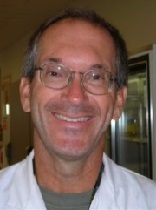
Biography:
J Koudy Williams is a DVM with over 35 years’ experience performing translational research using different animal models of human disease. He has published over 120 full-length manuscripts and 20 chapters and reviews. His focus is on women’s health and recently on regenerative medicine approaches to restoration of the urinary sphincter for women with urinary incontinence. This presentation is a review of determinates of cell therapy efï¬ cacy on urinary incontinence using nonhuman primates as an animal model of aging, chronicity of disease, estrogen deï¬ ciency, and obesity. The presentation concludes with a discussion of regenerative pharmacologic approaches for these different populations.
Abstract:
Keynote Forum
Martin J D’Souza
Mercer University, USA
Keynote: Bio fabrication of smart microcapsules containing insulin secreting pancreatic islet cells: Potential applications in diabetes mellitus
Time : 09:30-10:00

Biography:
Martin J D’Souza has obtained his PhD degree from the University of Pittsburgh, PA, USA. He is a Professor and Director of Graduate Programs in the College of Pharmacy at Mercer University in Atlanta, Georgia. He also serves as the Director of the Clinical Laboratory and Co-Director of the Center for Drug Delivery Research. He has graduated over 50 PhD students and has published over 100 manuscripts. He has been the recipient of several research grants from the National Institutes of Health (NIH), the American Diabetes Association, the Georgia Cancer Coalition, and Georgia Research Alliance. He serves on several Editorial Boards and is a journal reviewer for over 10 scientiï¬ c journals and has several patents issued in the area of Nanotechnology.
Abstract:
Keynote Forum
Beverly Torok Storb
Fred Hutchinson Cancer Research Center, USA
Keynote: Marrow ï¬ broblasts induce monocytes to promote endogenous regeneration
Time : 10:00-10:30
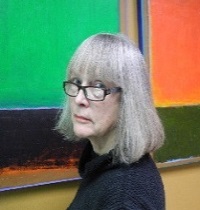
Biography:
Abstract:
Beverly Torok Storb is a full member of the Faculty at the Fred Hutchinson Cancer Research Center and Director of the Core Center of Excellence in Hematology. Her research focuses on dissecting the marrow microenvironment to understand the regulation of blood cell production and endogenous regeneration.
Keynote Forum
Vincent S Gallicchio
Clemson University, USA
Keynote: Lithium effects on stem cells advance in stem cell application in clinical medicine
Time : 10:45-11:15
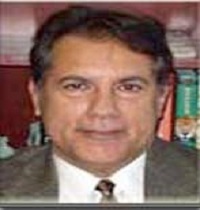
Biography:
Abstract:
Keynote Forum
Timothy Lyden
University of Wisconsin-River Falls, USA
Keynote: Development and application of bioengineered artiï¬ cial tumor tissues to effectively model breast cancer generation, progression and metastasis
Time : 11:15-11:45
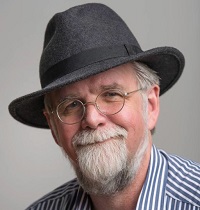
Biography:
Timothy Lyden graduated from the University of Maine-Orono in 1992 with his Ph.D. in reproductive cell biology. In 2001 he relocated to UW-River Falls from The Ohio State University Medical School. During the previous 11 years, he had worked as a biomedical researcher focused on the normal human placenta at both Ohio State and Wright State University Medical Schools. During that time he held positions as a Senior Post-Doctoral Fellow, Research Scientist and Research Assistant Professor serving as a co-investigator for nearly $4 million in NIH research grant projects. In 2001, he relocated to UW-River Falls in order to balance his scholarship with more teaching as well as to develop an ongoing independent research program. Following several successful smaller projects focused on various aspects of placental cell biology during 2001-03, he shifted his research focus in 2004 to modeling cellular and tissue aspects of developmental and tumor biology using tissue engineering methods. He is now a Full Professor of Anatomy and Physiology in the Bio-Medical track at UW-River Falls. In addition, he participates in teaching within both the Biotechnology and Neuroscience programs and maintains an active research center involving undergraduates in mentored projects. Throughout his career, he has authored or co-authored more than 22 chapters and papers while also presenting more than 200 posters around the world.
Abstract:
Keynote Forum
Kelvin Brockbank
Clemson University and Tissue Testing Technologies LLC, USA
Keynote: Ice-free cryopreservation of natural and bioengineered tissues
Time : 11:45-12:15

Biography:
Kelvin Brockbank, CEO, and Founder of Tissue Testing Technologies LLC is a Research Professor of Bioengineering at Clemson University and Adjunct Professor of Regenerative Medicine and Cell Biology at the Medical University of South Carolina. His research interests include cell, tissue and organ cryopreservation for test systems and transplantation and manufacturing methods for cell-based bioengineered therapy products. His work has led to the establishment of two successful publicly traded low-temperature technology platform companies, CryoLife Inc., and Lifeline Scientiï¬ c. He has over 500 publications and presentations at national and international conferences including more than 30 patents related to hypothermic, frozen and vitriï¬ ed biomaterial preservation.
Abstract:
Keynote Forum
Svetlana Gramatiuk
Ukraine Associated of Biobank, Ukraine
Keynote: Biobank sustainable plan in developing countries
Time : 12:15-12:45
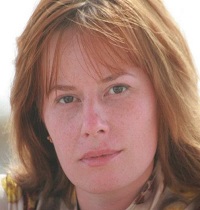
Biography:
Svetlana Gramatiuk (MD, Ph.D.) serves as President of Ukraine Associated of Biobank that she co-founded in 2017. She was also the Medical Director Research Biobank ASK-Health (2015-2016) and the Ukraine Editor of the journal Advanced Research Biobank and Pathophysiology from 2017. Previously, she also established and/or managed several biobanks in Ukraine. In addition to his unique expertise in Biobanking, she also did Master of Science Biobanking in Medical University Graz and has an in-depth knowledge of oncology biomarker research in the position holding a from Head Department Medical and Research Laboratory in the Grigoriev Radiology and Oncology Institute and having completed a Post-Doctoral Fellowship at the Kharkiv National Medical University (Department Pathophysiology from Kharkiv, Ukraine
Abstract:
- Stem cell and Stem cell biobanking | Vitrification | Fertility preservation | Biobank sustainability: current status and future prospects | Tissue engineering | Next generation Biobanking | Cryopreservation methods| Bio preservation and its Advances | Biobanking & expertise networks |
Session Introduction
Kejin Hu
University of Alabama at Birmingham, USA
Title: Role of bromodomain extra terminal proteins in cellular reprogramming
Time : 13:45-14:05

Biography:
Abstract:
Eric B Kmiec
Christiana Care Health System and University of Delaware, USA
Title: CRISPR-directed gene editing creates genetic heterogeneity surrounding the sickle cell disease point mutation
Time : 14:05-14:25

Biography:
Eric B. Kmiec is well-known for his pioneering work in the ï¬ elds of molecular medicine and gene editing. Throughout his professional career, He has led research teams in developing gene editing technologies and genetic therapies for inherited disorders such as Sickle Cell Disease. He is the recipient of multiple research awards from the National Institutes of Health (RO1s, R21s), the American Cancer Society, and private foundations including the 2012 Proudford Foundation Unsung Hero Award in Sickle Cell Disease. He has been a member of numerous editorial boards, NIH study sections and review boards and is the (primary/senior) author of more than 145 scientiï¬ c publications (mostly in genetic recombination and gene editing).
Abstract:
Naresh Kumar Rajendran
University of Johannesburg, South Africa
Title: Photobiomodulation at 660nm attenuates oxidative stress by inhibiting FOXO1 activation in diabetic wounded ï¬ broblast cells
Time : 14:25-14;45

Biography:
Abstract:
Yoo-Hun Suh
Gachon University, South Korea
Title: Potential stem cell therapy for Alzheimer’s disease and Parkinson’s disease
Time : 14:45-15:05

Biography:
Abstract:
Matthew M Fischer
Florida Healthcare Law Firm, USA
Title: Stem cell industry: Regulatory developments, FDA inspection and enforcement, legal issues for providers
Time : 15:05-15:25

Biography:
Abstract:
Stanca A Birlea
University of Colorado, USA
Title: Repigmentation of human vitiligo skin by narrow band UVB is controlled by transcription of GLI1 and activation of the β-Catenin pathway in the hair follicle bulge stem cells
Time : 15:40-16:00
Biography:
Abstract:
Renee Cottle
Clemson University, USA
Title: The promise of cell-based gene therapies using non-viral delivery approaches
Time : 16:00-16:20
Biography:
Abstract:
Alessandra Giuliani
Polytechnic University of Marche, Italy
Title: Advanced synchrotron radiation tomography in regenerative medicine: A 3D exploration into the intimate interactions between tissues, cells and biomaterials
Time : 16:20-16:40

Biography:
Abstract:
Bonginkosi Duma
National Health Laboratory Service, National Institute for Occupational Health, South Africa
Title: Quality indicators as a measure of good practice at the National Biobank in South Africa
Time : 16:40-17:00
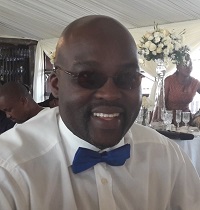
Biography:
Abstract:
Dalia A Elgamal
Assiut University, Egypt
Title: Sodium butyrate, a histone deacetylase inhibitor as a novel agent in treatment of juvenile diabetic rat: A histological and molecular study on pancreas
Time : 17:00-17:20
Biography:
Abstract:
Devyani Josh
Mercer University, USA
Title: Biofabrication and characterization of microcapsules encapsulating PC-12 cells for treatment of Parkinson’s disease
Time : 17:20-17:40
Biography:
Abstract:
- Video presentation
Chair
Video presentation
Session Introduction
Alessandra Giuliani
Polytechnic University of Marche, Italy
